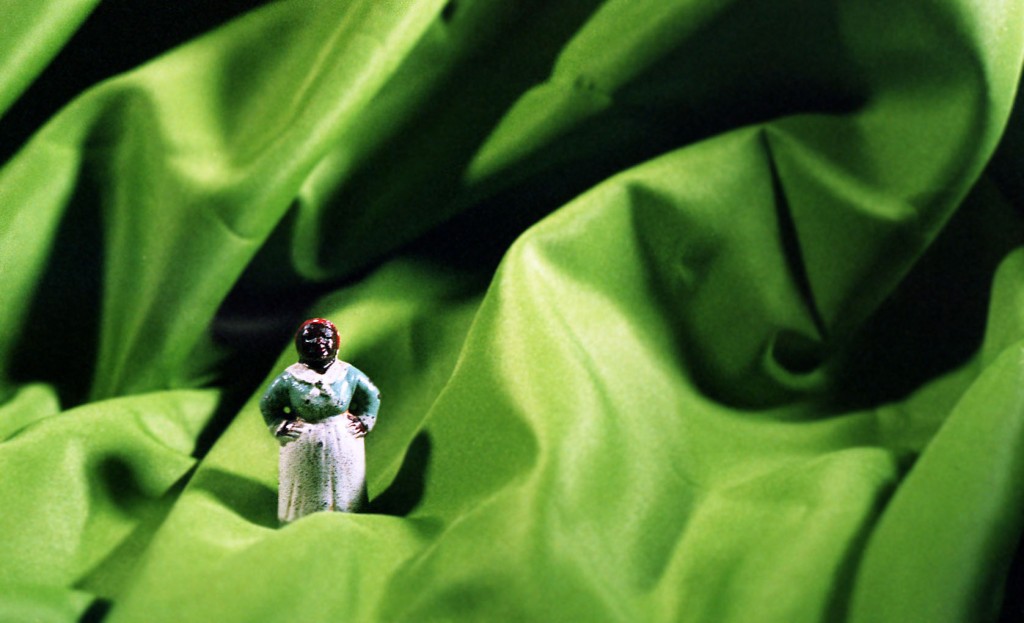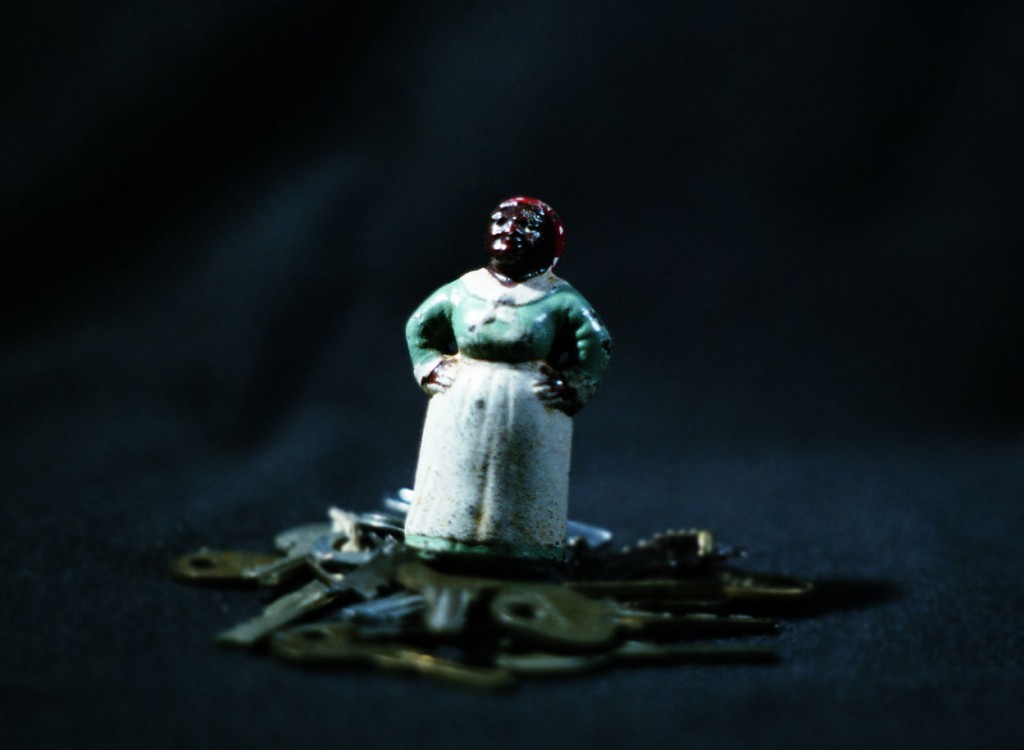Thea used to talk about ‘Mammie’, her nanny when she was just a little girl in Virginia. I can’t help but associate this character from her past with this paperweight I found. The inherent racism in this object and the dark history of it creates an interesting dialogue between representation and the inanimate, provoking questions of race relations and appropriation.


Life & Death of Things
Picturing Domestic Space


Loie, I love what you have done with these photographs. I take great pleasure in the idea of finding objects that have been “left behind” and giving them new life. My favorite of these photos is the third. It encompasses a perfect little nostalgic world and has a beautiful color scheme. I think it speaks to me so much because it relates to my project and the mood that I am trying to convey in my work. Everything you’ve done so far this quarter has been both aesthetically pleasing as well as deeply meaningful. I’ll be waiting to see what you come up with next.
Thank you so much! That means a lot to me, I really respect your work as well.
I once knew a collector of racist “kitsch”. It’s weird to think that these things were thought of as so normal and adorable or “classy”. I WAS curious if the figurine fit the description of Thea’s “Mammie”. Now that I have re-read your words and studied the photos I don’t need for you to clarify it for me. Thea’s relationship with her “Mammie” is valid and hopefully it was loving no matter who her “Mammie” was.
I like the third photo. The composition is nice. The shadows in the back ground look cool and add so more depth. There is a grittiness to it too. Was it shot on a low iso?
The first photo is really nice too. My only criticism is that is would look better with flaming plates of pancakes photo shopped into it. 🙂
‘Racist kitsch’…exactly! I know this object is evocative of many things. I think what I meant when I said I associate Mammie with this paperweight is the object’s cutesy nostalgic sugar coating of a dark history as representative of Thea’s endearing way she talked about her ‘help’ who’s previous generations had been slaves. However, this subject matter is delicate and I don’t want it to read as stereotyping. Maybe I should rephrase.
It’s interesting you mentioned pancakes, Thea’s husband Cecil has a story about when he was a little boy in Texas. On the corner store window, of their little town just outside Kilgore, the owner had cut out Aunt Jemima’s face off a syrup container and written ‘No Coloreds.’
You’ve initiated good dialogue about the statuette. What I see in it, though, is a woman with a grounded power stance: hand on hips. Her head is upright and she looks straight out at the viewer. That seems to deconstruct the common racist interpretation of such women in the American south.